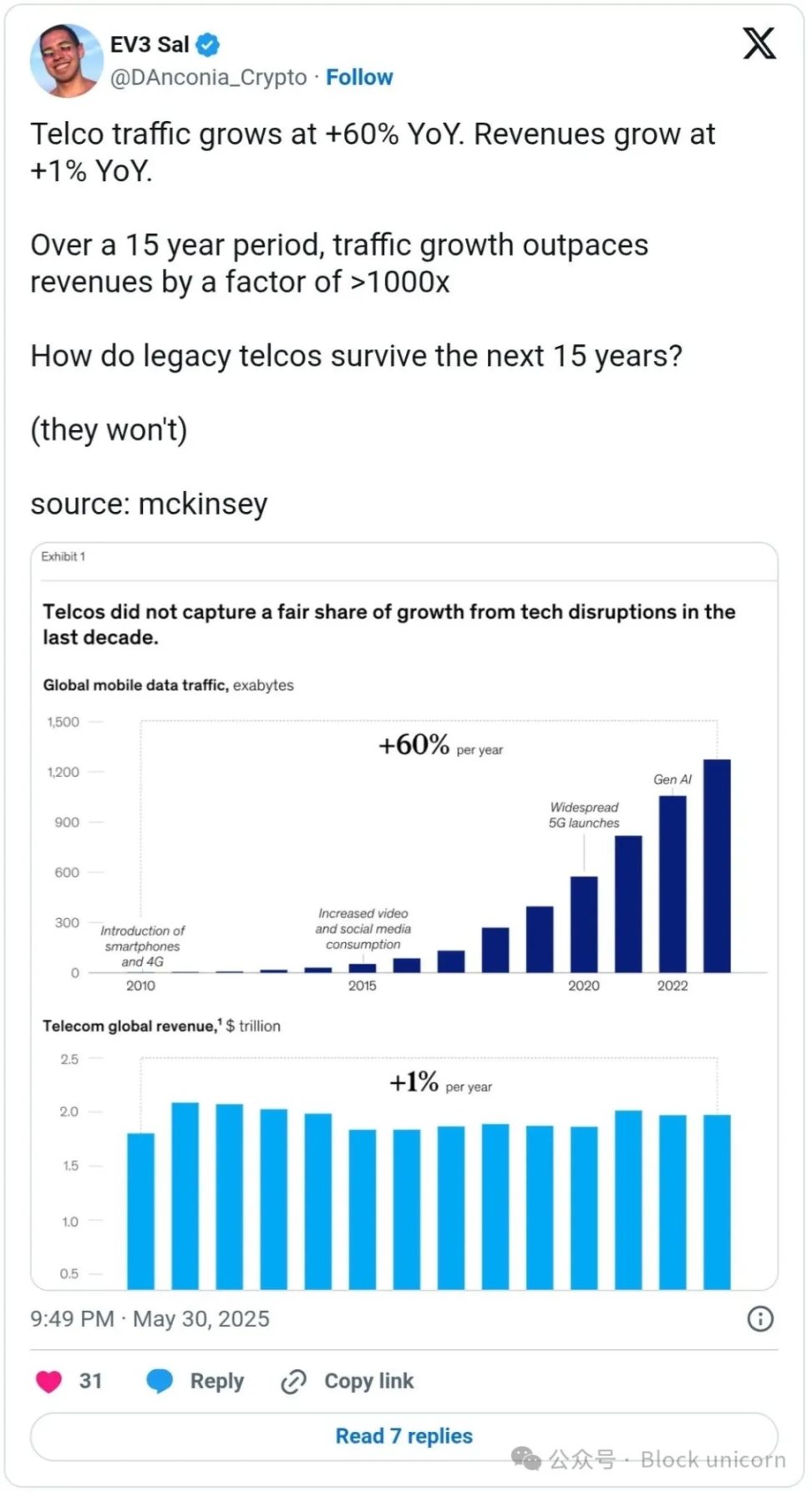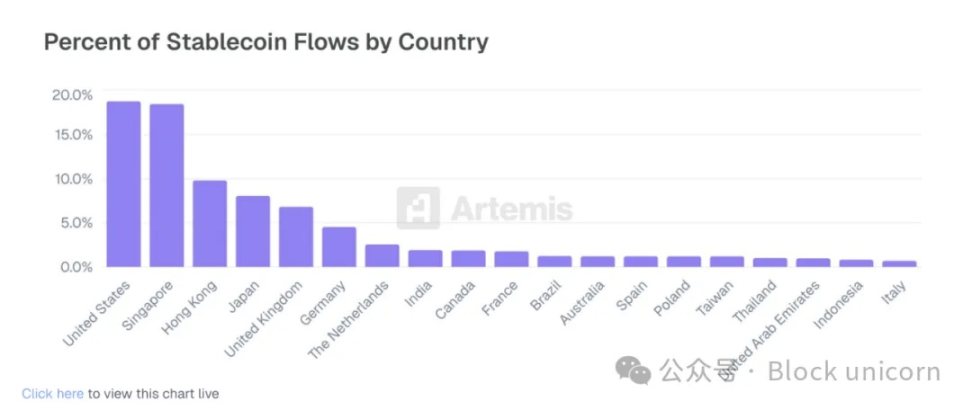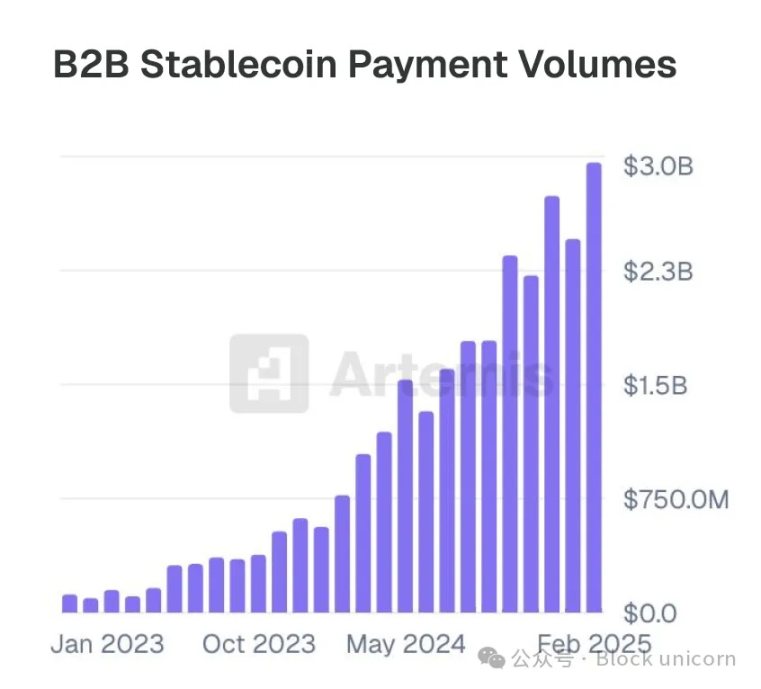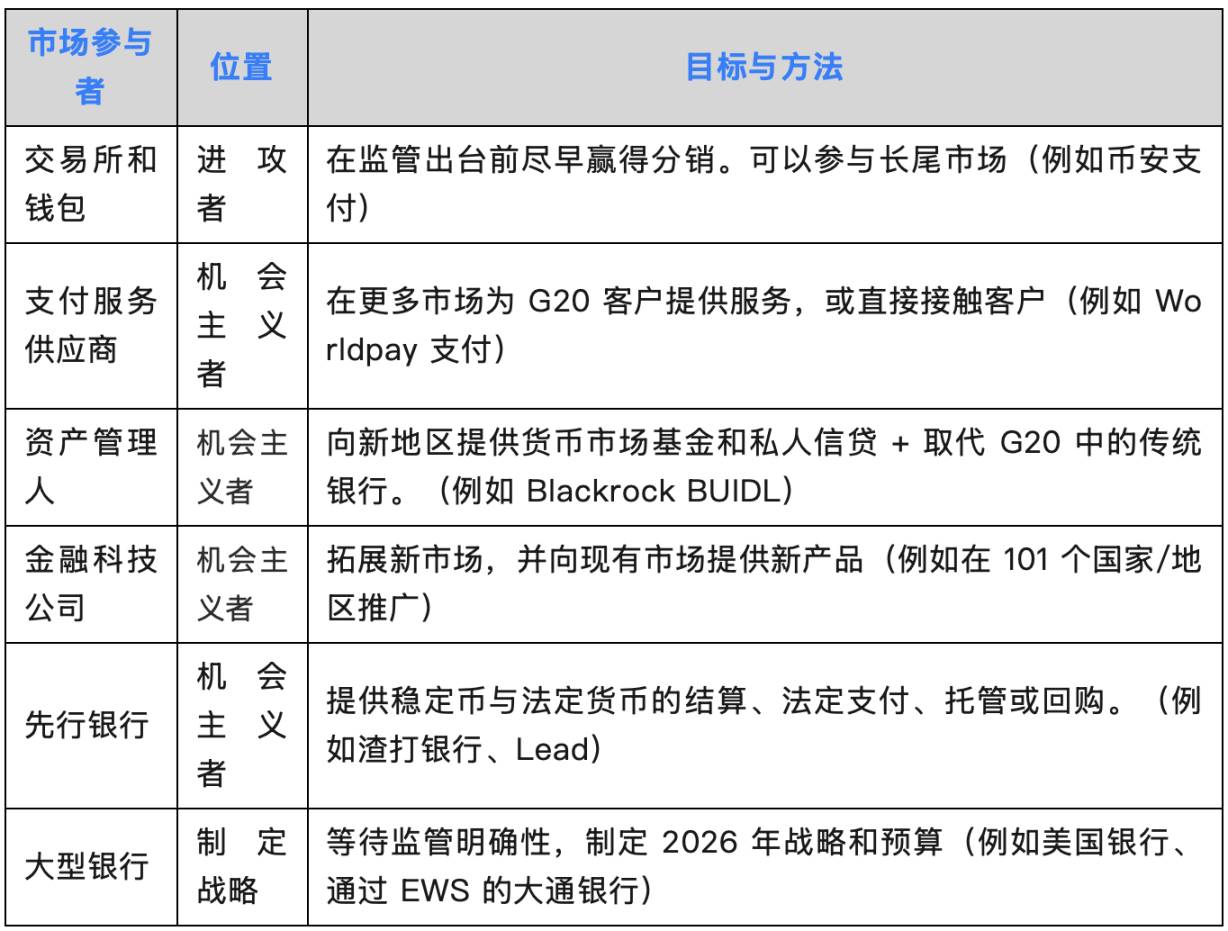Written by: Simon Taylor
Translated by: Block unicorn
Preface
Every fintech company will become a stablecoin company.
Although stablecoins have sparked various emotions like hype, suspicion, hope, and concern, I believe we have crossed an important watershed. We are transitioning from the "Banking as a Service" (BaaS) era to the era of stablecoins as infrastructure. Companies centered on stablecoins in B2C, B2B, and infrastructure will shape the industry in the next decade.
This transformation will be ten times more intense than the fintech boom of the past decade.
Because we are moving towards a new infrastructure layer. People still view stablecoins as a new payment channel, but when they see it as a platform that sits above all other layers, we will ultimately fully transition to stablecoin-native. Stablecoins are a platform.
Key points of this article:
Previous era: Banking as a Service (BaaS) and its insights into stablecoins
Why stablecoins are an infrastructure layer (not just a new channel)
Stablecoin gold rush and regulatory unlocking
Full-stack application scenarios
Strategic positioning and future outlook

Existing enterprises unable to adapt to the new platform layer will be commoditized.
The impact of stablecoins on payments is like the internet's impact on telecommunications - creating a platform layer that commoditizes the underlying infrastructure pipeline.
We can see this infrastructure layer gradually emerging in every payment process and business model. Here's how it works.
4. How Stablecoins Play a Role in the Entire System
Yes, stablecoins operate as alternative payment channels today. But this is just the foundation. Most people view them as payment channels in the diagram below, rather than a platform:

Stablecoins as payment channels - they are more than that and have more functions.
The real opportunity lies in the functions they can enable as infrastructure.
4.1 Stablecoins for International Payments - Starting Point
Undoubtedly, the primary use case for stablecoins is cross-border payments. The main currency routes are Asian countries, followed by the US to Latin American countries (Mexico, Brazil, Argentina).

G20 Leads Payment Activities in Global Southern Countries through TRON and Tether
Cross-border payments come in various types. Let's delve into each payment process.
B2B Early Adoption Use Cases:
Scale-expanding enterprises for market expansion (e.g., SpaceX): Used for financial management, supplier payments, and inter-company payments.
International Payroll and Payments (e.g., Deel, Remote): Contractors and employers will pay to stablecoin wallets.
Artemis surveyed over 30 companies in the stablecoin business and found that B2B, as a category, grew year-on-year by 400% (and accelerating), making it the fastest-growing category. (Note: The transaction volume shown in the diagram is only a part of the overall market)

As the growth curve shows, this is significant growth.
Currently, last-mile liquidity and forex spreads are bottlenecks, but new companies like Stablesea, OpenFX, and Velocity are entering the market to change this status.
Consumer cross-border stablecoin use cases include:
Remittances and P2P (e.g., Sling Money): Customers use stablecoins for cross-border remittances, faster and often at lower costs.
Stablecoin-linked cards: Also known as "dollar cards", allowing consumers in Southern Hemisphere countries to purchase services from Netflix, ChatGPT, or Amazon.
Artemis's survey also showed that P2P and stablecoin-linked cards grew year-on-year by over 100%, with at least $1 billion in transaction processing volume (TPV) in their sample.
Stablecoins are becoming a feature of new banks (like Revolut and Nubank), though their current use cases remain narrow but may expand in the future. Apps like Revolut, which initially started with remittances and P2P, can fully leverage this new channel due to their unique positioning.
Currently, forex spreads for local currency transactions are typically high, with low liquidity. But this is changing.
The landscape of domestic payments is still forming, but it's fascinating.
4.2 Stablecoins for Domestic Payments (Future Direction)
Domestic B2B use cases include:
24/7 Yield Stablecoins (e.g., ONDO or BUIDL): Currently, crypto-native financial departments convert stablecoins to tokenized government bonds to avoid exchanging to fiat currency. If this 24/7 functionality could be implemented in Enterprise Resource Planning (ERP) systems, it might be very attractive to any corporate finance director.
Stablecoins as an alternative to FBO structures (e.g., Modern Treasury): A characteristic of US regulation is that, as a non-bank institution, transferring funds on behalf of clients usually requires a "For Benefit Of" (FBO) structure. These accounts are complex to set up. Modern Treasury's stablecoin product allows finance teams to set up payment processes for clients without an FBO structure.
Native B2B Stablecoin Accounts (e.g., Altitude): Accounts like those provided by Wise or Airwallex could be stablecoin-native. These accounts are primarily in USD but provide an operating frontend to manage invoices, expenses, and finances.
Domestic consumer use cases are still in early stages, including:
Stablecoin-native "Checking" Accounts (e.g., Fuse): Similar to consumer experiences of Wise, Revolut, or remittance apps, but defaulting to global. These services currently appear in Southern Hemisphere countries but could be a new, low-cost model for consumer fintech projects.
Prepaid Card Projects: Since stablecoins may have cash equivalence, finance directors can obtain programmable money that can be recorded on the balance sheet like cash but is as liquid as digital payments, without managing complex prepaid debt issues.
P2P Stablecoins: Zelle, Venmo, Pix, and Faster Payments dominate in their domestic markets, but if stablecoins become another development model, these apps might only need to serve as frontends to support them.
4.3 Finance and Infrastructure (Hidden Layer)
The hidden layer is infrastructure. Banking technology itself is becoming native to stablecoins.
Stablecoin Issuance as a Service (e.g., Brale, M^0): Banks and non-bank institutions might want to create their own stablecoins to attract deposits or avoid fees charged by other issuers.
Stablecoins as a Side Core (e.g., Stablecore): Banks might want to create a record system that interacts with stablecoins, independent of their traditional platform. A "side core" can achieve this while still reconciling with the main core.
Stablecoins Providing BaaS-like Infrastructure (e.g., Squads Grid): Providing simple APIs for developers to quickly create consumer, B2B, or embedded financial products.
Most companies in the market severely underestimate developers' love for stablecoin convenience. For companies like Stripe, convenience has always been the secret to success.
You can imagine other possibilities. As a thought experiment, view stablecoins as a global, programmable record system that everyone can reconcile and view.
Each wallet address can be assigned to a known frontend or wallet creator, and these companies can immediately collaborate when KYC or AML issues arise.
4.4 Strategic Positioning of Stablecoins
The current market has attackers, opportunists, and participants still observing and formulating strategies.
Currently, the vast majority of activities occur on new platforms like crypto exchanges and wallets, but opportunists are companies now positioning to leverage stablecoins as a new payment channel:

Here are my thoughts on who is what:
Attackers:
Asset Management Companies: BlackRock, Franklin Templeton, and Fidelity, which rely on banks for wire transfers. Since the financial crisis, they have taken market share from banks in credit and money market funds. Stablecoins connect all this through an instant, 24/7 settlement layer.
Payment companies like Stripe, WorldPay, and Dlocal are expanding the number of markets they can operate in and the types of payment processes they offer. "Financial accounts" are eroding the core business of large money center banks but typically target newer customer groups.
Defenders:
Large Banks: JPMorgan Chase, Bank of America, Citibank, and other US banks previously discussed launching their own stablecoins. I believe this might be to capture market share in this new domestic and cross-border payment "channel", just as banks dominated P2P payments through Zelle, they might "inevitably" also dominate this new channel.
Small Banks: Have started lobbying against stablecoins. Stablecoin issuers, asset management companies, and large banks might draw deposits from their low-yield checking accounts, so small banks stand to lose the most.
There will be a group of opportunistic banks, like we've seen in sponsorship banking, who will gain huge opportunities through stablecoin disruption.
The reality is that opportunities vary by use case. Startups are exploring new payment processes, while payment service providers (PSPs) are expanding market access through existing processes. In the future, asset management companies and banks will find their positioning in the market, likely closer to their existing core business.
5. Criticisms, Concerns, and Why Most Are Exaggerated
I will summarize the criticisms as follows:
Criticism: Stablecoins will trigger bank run scenarios. Rebuttal: This assumes Terra-style algorithmic stablecoins, not Treasury-backed permissioned payment stablecoin issuers (PPSIs) under the GENIUS Act.
Criticism: Large tech companies will form a monetary oligopoly. Rebuttal: This is a reasonable concern, but the framework makes it unlikely for large tech companies to directly issue stablecoins—they will use stablecoins, not issue them. Becoming a PPSI presents high regulatory barriers.
Criticism: Will lead to community bank deposit outflows. Rebuttal: Money market funds are already causing this. Community banks that adapt to provide stablecoin services will thrive.
Criticism: "This is crypto," implying it's full of crime and scams. Rebuttal: It's time to abandon this view. The future of finance is on-chain, and institutional capital is building infrastructure. There are genuine, novel risks such as key management, custody, liquidity, integration, and credit risk that should be focused on.
Criticism: Stablecoins are just regulatory arbitrage because "holding USDC should be as difficult as holding USD". Rebuttal: Fintech itself achieved regulatory arbitrage through the Durbin Amendment. It's easier to develop on stablecoins, but there's also a comprehensive licensing system.
I believe this debate will continue.
Stablecoins will drive the next era of finance, and our vision of the future has only just begun.
6. Finally, Why Every Company Needs a Stablecoin Strategy
Everything we do today can be stablecoin-native, at which point finance will gain superpowers. We can build instant, global, 24/7 finance. We can recombine financial Lego blocks, and make it more developer-friendly.
The BaaS era tells us that new infrastructure creates massive opportunities and risks. Companies that learn from the successes and failures of that era will win in the stablecoin-centric era.
Every company needs a stablecoin strategy. Every fintech company, every bank, every finance team needs one. Because this is not just a new payment channel. It is the platform layer upon which everything else will be built.
I implore every reader to build based on lessons from the past.
Collapses are inevitable, and things will go wrong, which is also inevitable.
This includes how you will protect yourself when things inevitably collapse.
Build cool things.
And stay safe.






